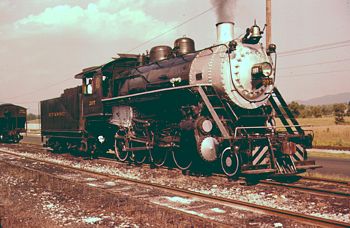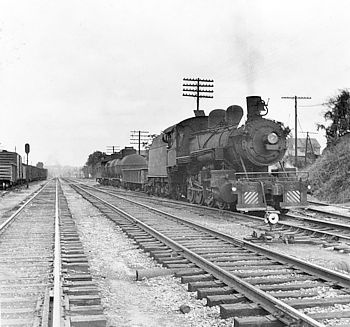
Remembering Our Origins:
A Salute to the Morris County Central Railroad
Copyright 2000 by Steven P. Hepler
The predecessor organization of the Whippany Railway Museum was the Morris County Central Railroad Museum, which operated from 1965 to 1973 in conjunction with the steam-powered weekend excursion trains of the MORRIS COUNTY CENTRAL RAILROAD (MCC). Though separate from the for-profit, commercial venture of the Morris County Central Railroad, the non-profit museum was able to enhance visitors’ experiences by giving an educational, hands-on look at railroad operations and history, in addition to the nostalgic train excursions offered by the MCC.

The Morris County Central Railroad was the first standard gauge, historic preservation railroad in New Jersey. It was also one of the earliest operations of its kind in the United States.
The idea of running steam-powered excursion trains on a regular basis in the Northern New Jersey area was born in the mind of a New Jersey aerospace technician named Earle Richard Henriquez-Gil in the late 1950’s when conventional steam railroad operations were fading fast from the North American scene.



Gil was born on December 24, 1928, the same year that the Morristown & Erie Railroad finally discontinued its passenger service between Morristown, Whippany and Essex Fells, NJ. Earle’s life-long fascination with trains apparently came from his father, Carlos, who was the Export Manager for the A.C. Gilbert Company, makers of the legendary American Flyer model trains, and the equally famous Erector Sets. Photos from the late 1930’s show a young Earle, sitting at the controls of his extensive American Flyer layout that was built in the attic of the family home, ‘Thornwood Farms,’ once located at 4 Whippany Road in Morristown, NJ.


After marrying in 1950, Earle and his young family would travel throughout Canada and the Southeastern United States during the late 1950s and early 1960s. This was, in part, an effort to witness and document on film the final steam-powered operations of the large Canadian roads and the unique American shortline railroads that hauled coal, lumber and agricultural products through the rural areas they served.

In 1959, while visiting the Virginia Blue Ridge Railway (VBR) in Piney River, VA, Earle and his son climbed into the cab of rusting VBR locomotive No. 6 that was parked on a weed-grown siding… forlornly sleeping out her final days. Earle stated that “this engine will never run again.” After photographing the engine, they left the property and eventually went home to New Jersey.
Virginia Blue Ridge No. 6 was originally built by the Baldwin Locomotive Works of Philadelphia, PA in November 1907 for the Southern Railway as their No. 385. The locomotive was a classic, early 20th Century 2-8-0 “Consolidation” H-4 Class, fast-freight engine. It had come to the Virginia shortline in 1952 where she labored in freight service for several more years before being retired.


